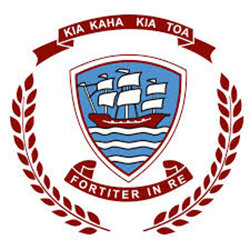FUTURE OF LEARNING
SHOWCASE OF FUTURES-LED THINKING IN EDUCATION
Learning Architecture
CREATING STRUCTURES TO FACILITATE LEARNING
Learning architecture refers to the design and setup of learning at a school. This includes physical and online environments, class structures, combinations of learning activities, and resource design.
The schools interviewed for this report share some common elements that could be key for successful hybrid learning as we move into a future where less and less learning takes place in school buildings. First among these is a user-friendly online learning environment which can be accessed from anywhere and navigated easily by ākonga and their whānau. Derek Wenmoth writes about the need for curriculum resources to be stored in a “centrally accessible environment” where kaiako can share planning and ākonga and whānau can access learning from home and ideally engage in dialogue about the learning content with kaiako and ākonga who are located elsewhere. All schools interviewed are using this in one form or another. Te Aho O Te Kura Pounamu (Te Kura) and Tāmaki College have websites that are tailored to their schools. Vitally, these sites are set up consistently across each school so that ākonga can see an overview of their mahi (work) in all of their subjects and experience the same online learning environment across all subject areas. Greenhithe School and Wesley Primary School, recognising that younger ākonga will find a simpler platform easier to navigate, store all learning resources and external links in weekly sets of Google Slides. Ormiston Primary School simplifies this even further for homework with a weekly grid containing all options and external links. For all five schools, the purpose and result are the same: ākonga know that their learning can always be found in the same place, which can be accessed on- or off-site.
While this central access point for learning tasks needs to be located online for ease of access, it’s important to note that all interviewed schools integrate hands-on learning and encourage activities that cannot be done in a traditional classroom setting, from Wesley’s garden to Te Kura and Tāmaki College’s emphasis on trades programmes. As we see more and more online learning happening at schools, it is important not to lose sight of the value of offline activity and interaction. This is significant at Te Kura, where there is no school building and an effort is being made to increase hands-on and in-person learning opportunities for ākonga who learn in a mainly online environment.
Another important element is equity of access. A robust setup for this is exemplified by both Tāmaki College and Wesley Primary as Manaiakalani schools, with “strategies in place to ensure all learners have access to digital devices and internet access at home” and paid training for kaiako to become digitally fluent themselves before guiding their ākonga to do the same.
Team teaching and shared planning are also common themes among the interviewed schools. Ormiston, Wesley, and Greenhithe all have classes grouped together so that kaiako can share planning and supervision. This enables a wider range of activities to occur at once in a shared physical space. It also decreases the workload of planning for individual kaiako, not only improving their work-life balances but giving them time to plan their own content in more depth and to spend more time focussing on building relationships with their ākonga. Kaiako at both Wesley and Tāmaki College mentioned how central online resources make it easy for kaiako to cover for each other: relief doesn’t need to be set because the content is already online and accessible to classes.
Futures thinking is visible in learning architecture when it comes to how some schools are changing their approach to assessment. The Manaiakalani learn, create, share pedagogy, used at Tāmaki College and Wesley, allows ākonga to gather feedback from peers, whānau, and community as well as from kaiako. Ormiston and Wesley have ākonga-led conversations with parents where ākonga are empowered to describe their successes, goals, and challenges to their whānau rather than waiting while the kaiako does so. Wesley is looking at how to move away from standardised testing altogether, having already reduced the number of times that it happens in a year with these ākonga-led discussions filling the gaps. And Te Kura takes an innovative approach to attendance, tracking instead whether ākonga are engaging with learning online or offline and not limiting this to traditional school hours.
Across the board, a successful element of hybrid learning is ākonga input, from student-led inquiries at Wesley to highly personalised timetables at Te Kura. Hybrid learning gives schools the flexibility to implement ākonga ideas in curriculum design in myriad ways, and where this is happening ākonga are feeling a sense of ownership over their learning and are motivated to take it further.







